
12-03-2021 - Case Study, Gear, Technology
Shot on VENICE: John Grillo’s Palette Depicts “American Rust”
By: Suzanne Lezotte
Set in a small fictional town in Pennsylvania, “American Rust” is the newest drama from Dan Futterman (writer/producer of “Capote,” “The Looming Tower,” and Oscar-nominated writer for “Foxcatcher”), which explores how decisions alter the course of the residents’ lives, forcing them to confront their past and redefine their future. Based on the book by Philipp Meyer, this limited series drama shows life in a faded town in the Midwest, where relationships are torn apart and created, hopes and dreams are as crumbling as the houses. Jeff Daniels plays the complicated and compromised Chief of Police Del Harris, trying to wean himself off anxiety drugs, while Maura Tierney plays Grace Poe, a dressmaker who lives in a trailer on the outskirts of town with her son Billy, once a celebrated high school football player, as she fights against poor working conditions, her hands riddled with pain.
“I wanted ‘American Rust’ to look dark,” said cinematographer John Grillo (“Snowpiercer,” “Westworld,” “Preacher,” “The Leftovers”). “It’s not a happy show. Characters are going through difficult times and I wanted the visuals to reflect that,” he explained. “I wanted to communicate a sense of abandonment. You could see it was a vibrant place once, and now there are just remnants of the past: abandoned buildings, storefronts with products still on display.” Locations were a combination of three or four towns around Pittsburgh, pieced together to create the fictional town of Buell. “I told the producers I wanted to shoot the show in its entirety, to maintain a continuity. It would have been a bit of chaos to have two DPs shooting, because the blocks were not necessarily synchronous with the episodes. Often, we had two or three different directors coming in to shoot on the same day.” Grillo shot eight of the nine episodes, with camera operator Laura Hudock lensing one episode.
Grillo knew that he was going to shoot a lot of exteriors, and wanted “to figure out how to maintain a continuity of the look, since the weather was constantly changing from sunlight to overcast with fast-moving clouds.” Together with his colorist, Tom Poole, and DIT, Ernesto Joven, they created a LUT that would bring down the highlights. “We came up with a LUT that really played with the colors of Pittsburgh, which reflected the title of the show. We defined a limited palette of rusty colors, which we pulled in with wardrobe and set design.
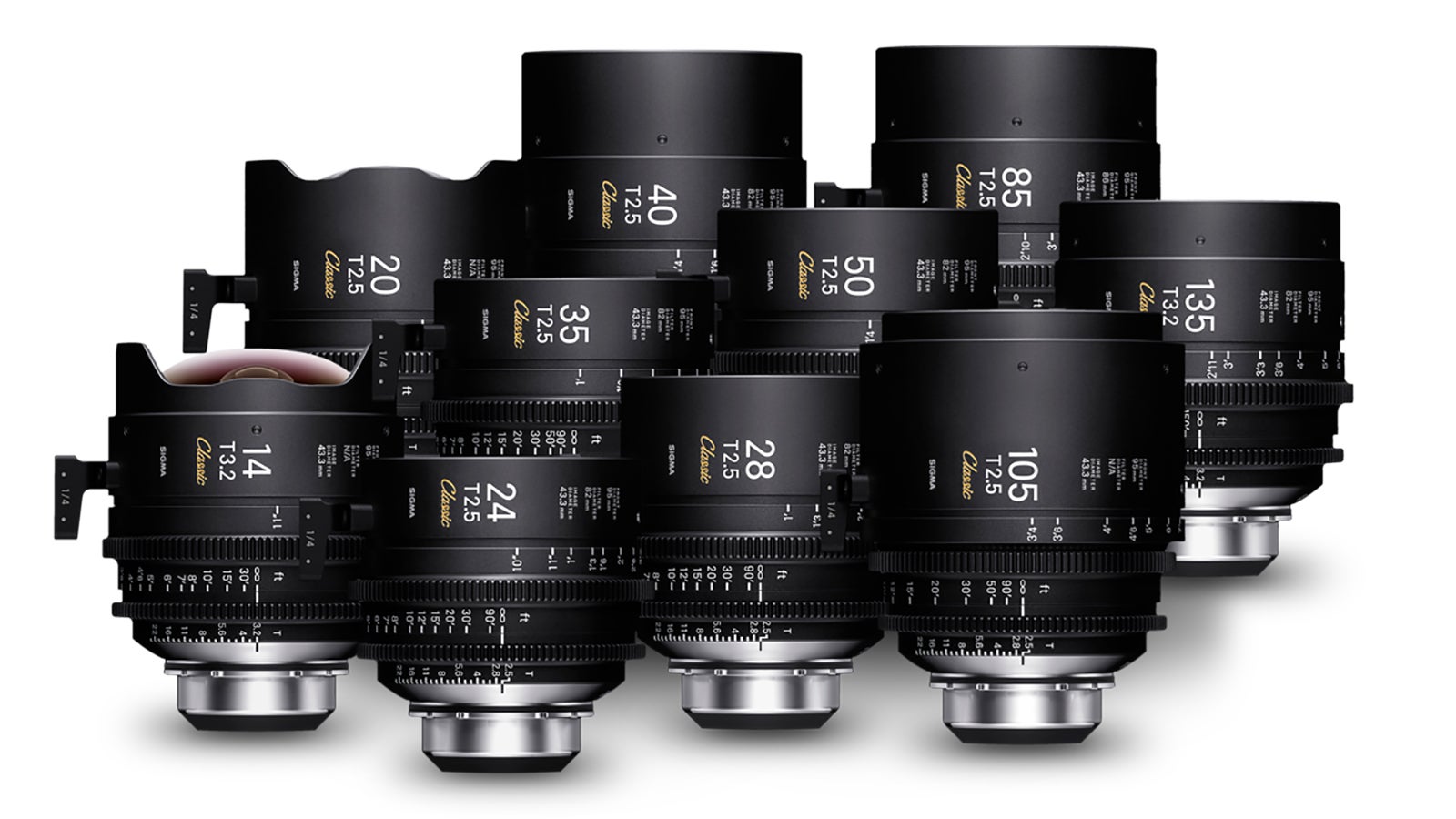
Sigma Classic Primes
Underexposing was a big part of it.” For an overall tone, he watched some films shot in and around the locations, including “Out of the Furnace” with Christian Bale, but “nothing really influenced me visually. I wanted to give the show texture. One of the difficulties of shooting digital as opposed to film is that it’s hard to give the image texture. It’s too clean.” As an early adopter of Sony VENICE, Grillo knew that “the 2500 ASA on the VENICE is pretty darn clean but there is a bit of noise -- in a good way -- so I wanted to enhance that.” With his camera package from Keslow, he decided on the Sigma Classic lenses, noting that because they are uncoated, “they lower the contrast because the light is not concentrated and sharp when it hits the sensors. It opens up the shadows a bit more. It was almost like adding smoke to the set, creating a denseness to the atmosphere.” Grillo was determined that the visuals of the show really reflect the “the oppressiveness of the place. I didn’t want the sun to be beautiful, I didn’t want it to be pretty, because that wouldn’t help tell the story.”

Grillo’s camera of choice was the Sony VENICE because “I love the way it renders colors and skin tones. Like most digital cameras, the images tend to be very crisp and I often find myself trying to soften the image a little bit, because it is a very sharp sensor. To me, I feel like it’s better to start at that level, and using either diffusion, or uncoated lenses, try and give it a little texture. I love the full frame aspect.”
In early discussions with director John Dahl (“Yellowstone,” “Billions,” “Ray Donovan”), they both agreed they didn’t want the camera moves to intrude. “We wanted to observe these characters, and not get in the way of them. This meant we had to be very economical in the way we presented the shots for the story. If we were going to do a shot that was outside the language of what we wanted to establish, it would be for a purpose. We were intent on finding a purity of language in the camera work, not to divert the viewer from the story. It was kind of refreshing, because it allowed us to plan the day in a more accurate way.”
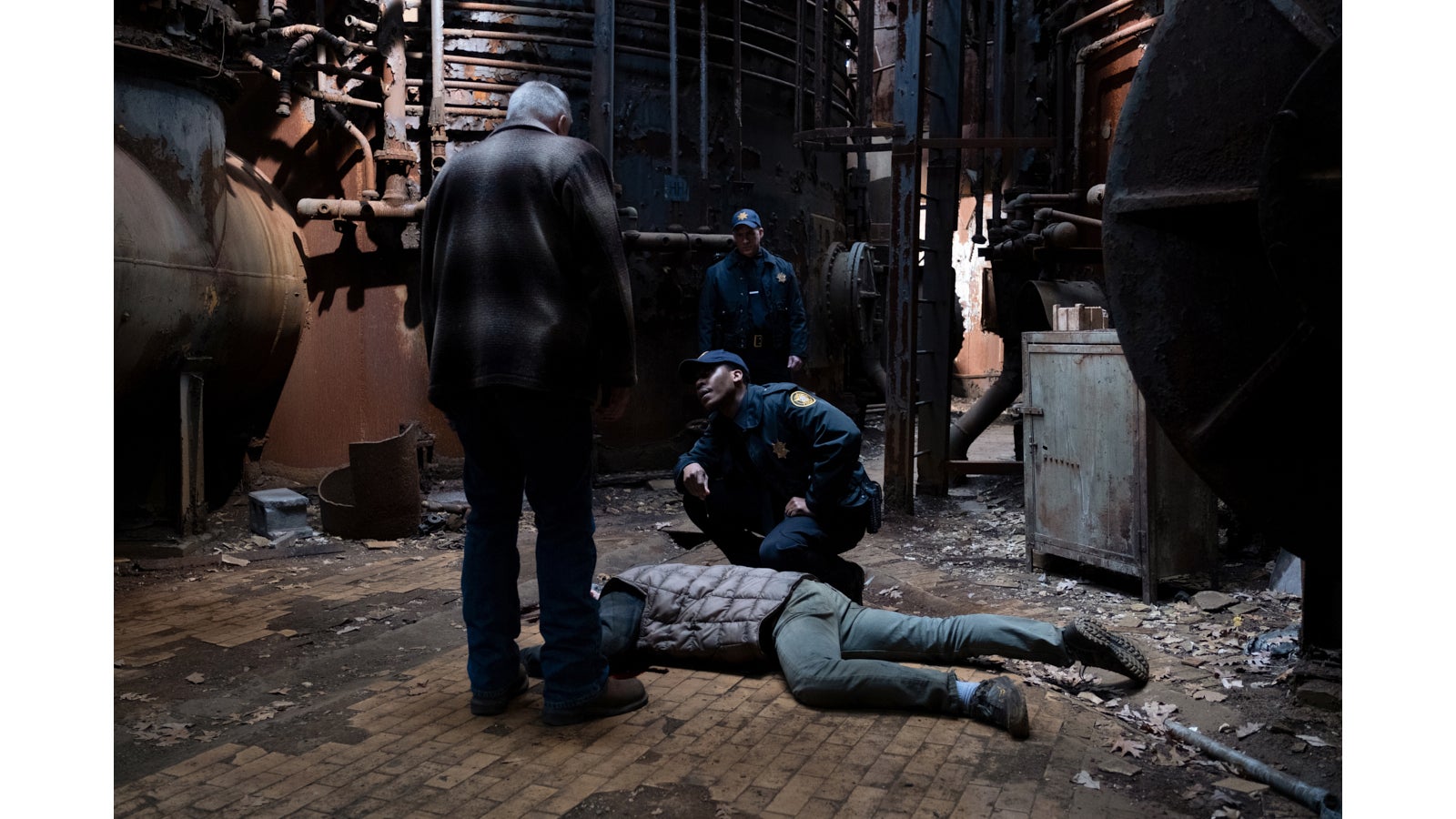
Jeff Daniels as Del Harris, Jim True Frost as Pete Novick and Namir Smallwood as Sheriff Deluca in AMERICAN RUST. Photo: Dennis Mong/SHOWTIME.
In a pivotal scene where a local cop is found murdered at an abandoned mill, Grillo explained, “even though we were shooting in the bowels of the mill, surrounded by these old tanks, we still had this beautiful ambient light coming from the top.” He only added a few lights to accentuate the emptiness of the mill. “This was a classic situation where the VENICE at 2500 ASA can give you the information you need with very little light,” he said. The scene was shot on an overcast day, after it had rained, “but the soft light coming down gave us so much texture on the sides of these rusty old tanks.”
In a separate episode, there is a flashback scene that details what happened in the mill. Because it was a flashback, “I proposed we go very heavy with flares, and the uncoated lenses allowed us to do that. We shot the whole show with the Sigma Classic Primes. I hid some lights above the frame, and my gaffer, Tom Morrison, would walk around with a flashlight, to give it an organic flare.”
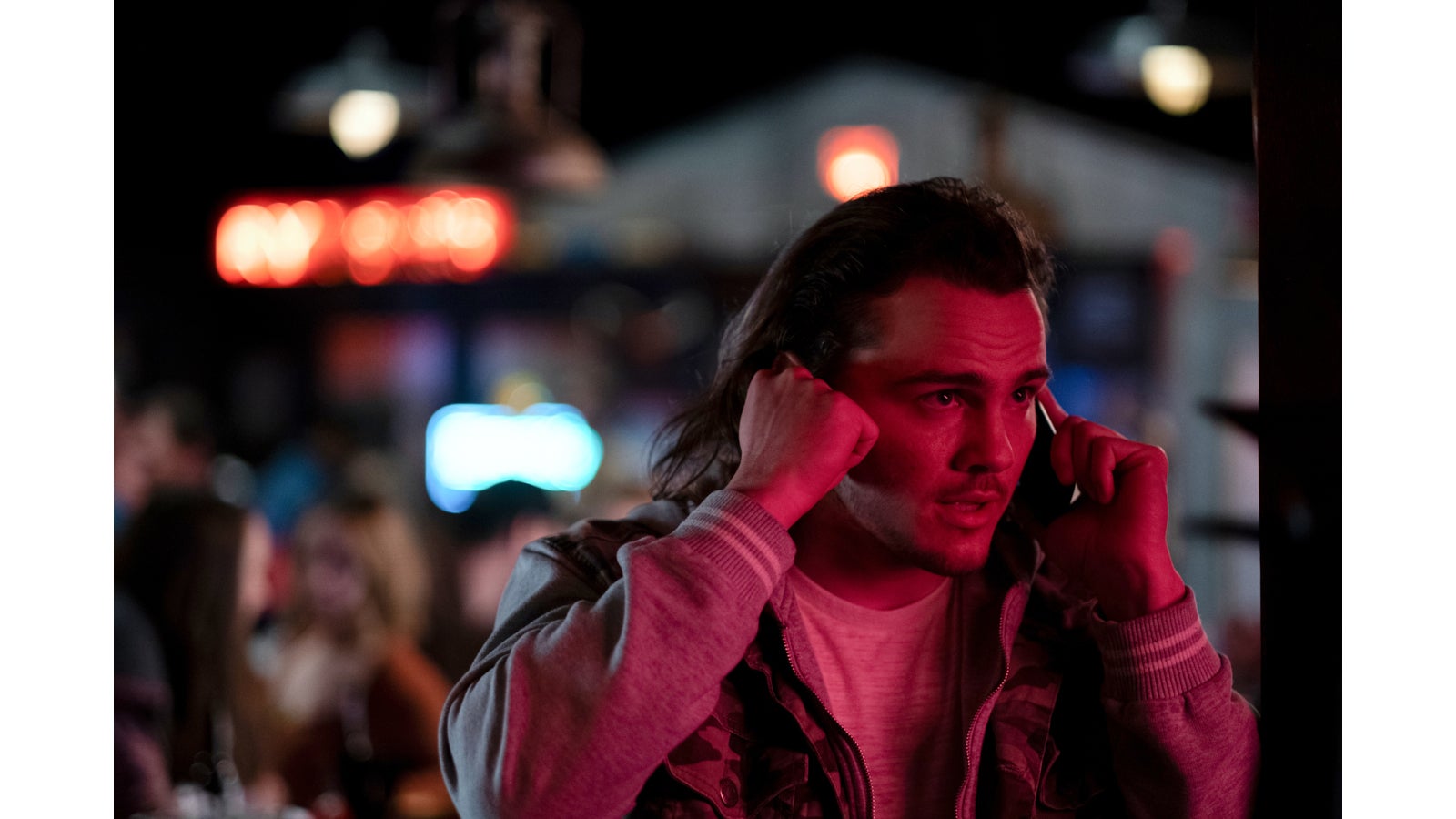
Alex Neustaedter as Billy Poe in AMERICAN RUST, "The Mill". Photo credit: Dennis Mong/SHOWTIME
Shooting a wedding that takes place in a bar, Grillo had an interesting location to work with. “When the bar was described to me, I couldn’t understand it. It was built under a bridge, which apparently is quite normal for that area, where the underside of the bridge is the ceiling. We shot some wide shots, so the audience would understand the setting.” Since the exterior was under the bridge, the crew built a façade, “which I lit with neon lights, then placed some inside.” When Billy, who was involved in the murder, exits the bar and walks across the street to meet Isaac, a friend of his who was also involved, the two begin a heated discussion, with the bar in the background. Grillo admitted, “I had such a hard time with all the streetlights up on the bridge; we were surrounded by them. Sometimes, they would come from a quarter of a mile away, and I could see the shadow of the tree on the actor’s face, so I kept putting flags up to keep the lights off their faces.”
The interior of the bar where the wedding took place was shot on stage, and encompassed 80% of episode two, “but we only had four days to shoot it,” said Grillo. As the wedding guests dance in a circle, the camera follows them around. “The only way to light it and do a 360 degree shot was to hang string lights above the dance floor, and those were my practicals. I hid some soft sources off-camera, where I could, and tried to keep it real. That was imperative; I could not have finished on schedule if I had to do a lot of traditional movie lighting. I would then light for the close-ups.” The scene evokes a hometown ‘shotgun’ wedding, amid the desolate town. “It’s how I approach lighting, I light the environment, and let the actors live in that environment. I like to light from the outside in, then work on the fine details.”

Alex Neustaedter as Billy Poe and Maura Tierney as Grace Poe in AMERICAN RUST, "Happy Returns". Photo credit: Dennis Mong/SHOWTIME
After the meeting with Billy, Isaac deserts his family and heads west, jumping onto a train. Similar to the wedding scene, production used two separate locations: one is the actual train that he hops onto, using a stunt double, and the second is on stage. “I had a light coming through the window, and he sits in the light to warm himself. I also had a light bouncing into the ceiling to control the shadow detail. By doing that, I had the ability to later crush it down and make it darker. If you start too dark you don’t give yourself any room in post.” Because Grillo had spent months shooting train sequences for “Snowpiercer,” he admitted it was easy to shoot that scene. “The challenge is not to try and repeat yourself, though, it’s about learning something new.”
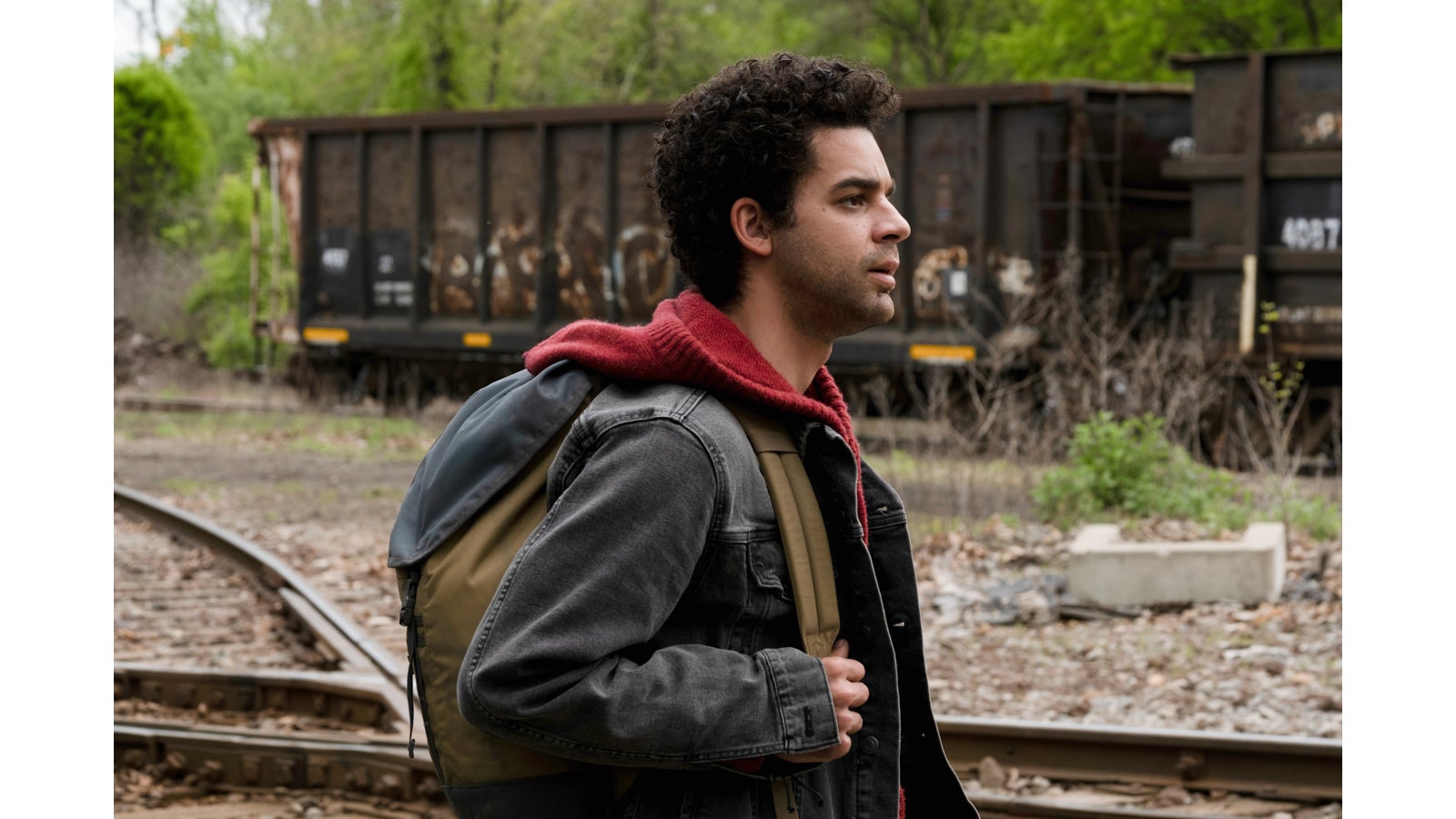
David Alvarez as Isaac in AMERICAN RUST, "Happy Returns". Photo credit: Dennis Mong/SHOWTIME
One of Grillo’s favorite scenes occurs after Isaac has paired up with a homeless girl, JoJo. The two of them scrape together enough money to get a hotel room. As they get to know each other, their conversations deepen. They have an interesting dialogue while Isaac waits in the bathroom for the girl to finish showering, with both of them in silhouette, one behind the shower curtain, one in front. “That wasn’t planned, but that’s what I love about the work we do. You come upon things that happen in a very organic, natural way, and you are there to photograph that when it happens. I didn’t plan the silhouettes in the shower curtain, but when I pumped some lights through the window I saw the shadow of the stand-in hit the white material and I saw the stand-in for Isaac in the doorway. I realized that if he’s in profile, he’ll be silhouetted at the same time that her shadow will appear on the shower curtain. We asked Isaac to try and play the scene in a profile if he could, and you’ll notice we don’t cut away from the scene. We just stayed on the shot. It’s a moment when trust is starting to develop in their friendship so it’s really poignant.”
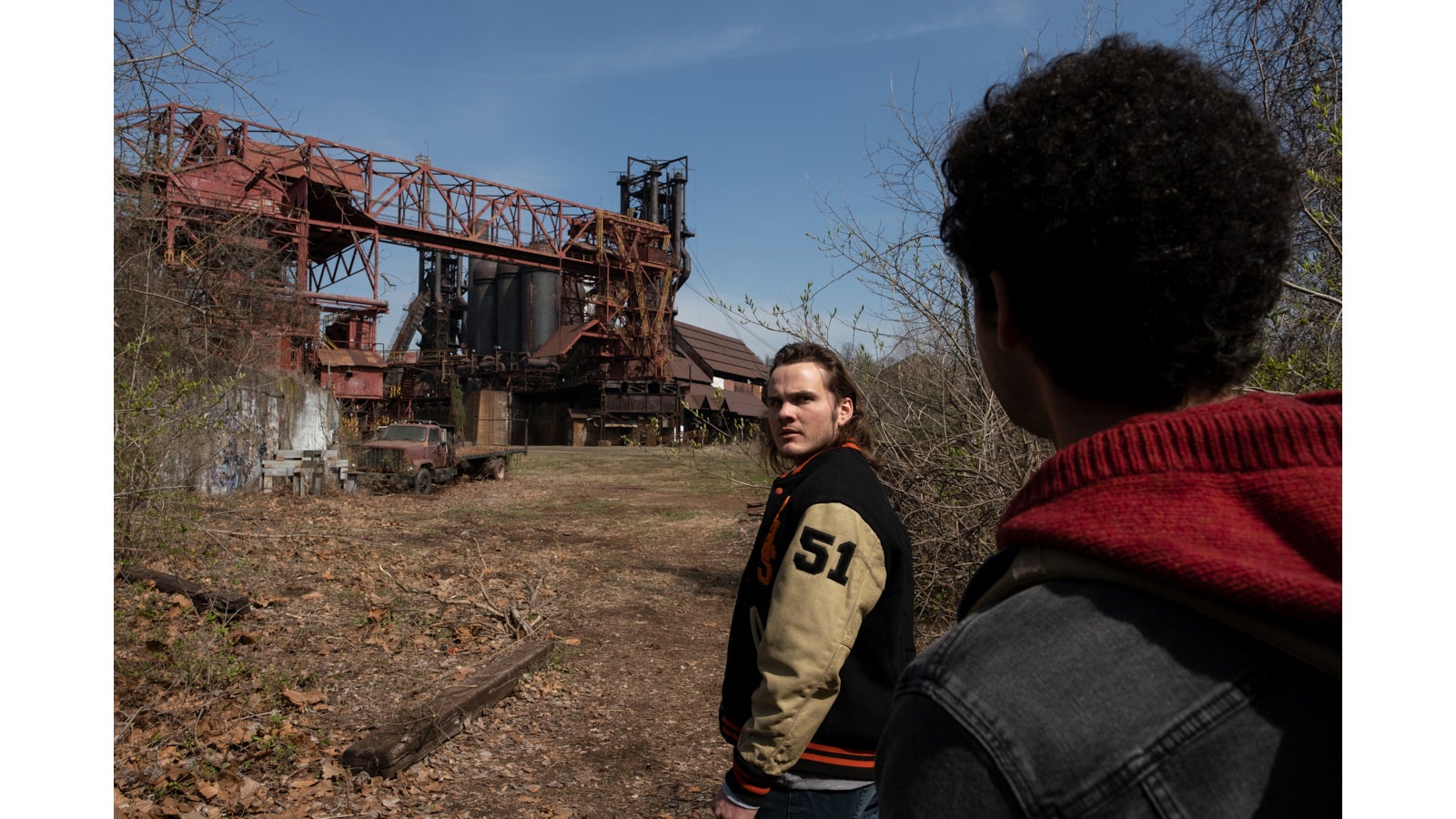
Alex Neustaedter as Billy Poe and David Alvarez as Isaac English in AMERICAN RUST, "The Mill". Photo credit: Dennis Mong/SHOWTIME
Grillo used the Sony Rialto quite a bit, specifically to get into tight spaces. At a halfway house where one of the drug dealers is staying, which was also two locations (the exterior was shot in another town), Grillo explained that the Rialto helped quite a bit because “I try to avoid pulling walls on set. I feel like you break the reality of the geography you are in. We built the hallway and the bathroom where he is taking a shower on stage, and the Rialto allowed me to get really close to him. The Rialto helps to mimic the claustrophobic feeling of being in the shower with him, and it also frees the operator to move around and physically get closer to the actor’s face. It’s a great tool.”
In another bar scene, which was shot primarily with the Rialto, the Chief of Police is chasing one of the murder suspects. “We shot in a real location versus a stage, even for the exterior,” said Grillo. “I tried to get a little bit of color in that scene; it’s one of the few locations that has a bit of red and blue and yellow. I added some lights in the bar to give it a different look so it would feel separate from the rest of the show. I like to use red light when I can, for scenes that merit it, and then I lit the hallway very simply so they would come in and out of shadows. When they come out of the stairs, I put a Tweenie in the background, so I could flare the lens. I knew when they walked into the hallway from the room that I would get this flare from the lens.” Given the physicality of the scene, “we had to cut it up because it was physically exhausting for the actors. That was the Rialto chasing after them.”
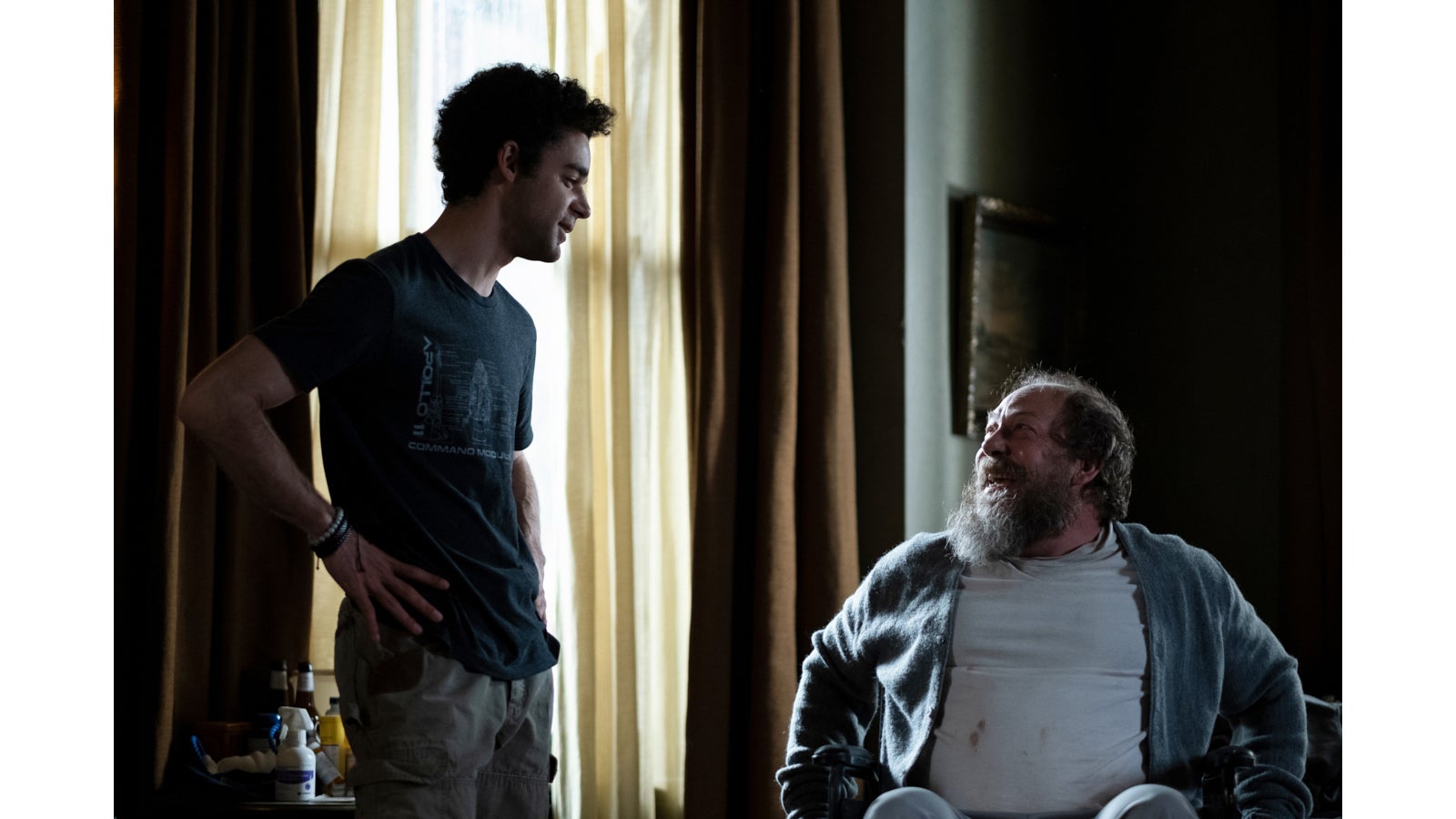
David Alvarez as Isaac English and Bill Camp as Henry English in AMERICAN RUST, "The Mill". Photo credit: Dennis Mong/SHOWTIME
A key set in the depiction of life in “American Rust” is the home of Isaac and his sister Lee, where their wheelchair-bound father lives. Grillo wanted it to evoke a musty, dirty look. “It had to be dark and depressing, just like the character of Mr. English. (played by Bill Camp). You can see the sunlight struggling to hit the walls in the house; it’s a dark winter light. I could have brought the ambient level up, but I wanted to visualize his unhappiness.” With another scene that takes place on the porch of the same house, they were able to shoot part of it at the house’s exterior. Isaac sees his sister making love to Billy, “so for Isaac’s POV we had a wide shot of the front porch.” Because it was cold in Pittsburgh, the rest of the scene took place on stage, where the production designer built a replica of the porch. “I had a table lamp that tied to the two locations together. It always helps to have something that the audience can visually relate to; it helps the transition from a real location to the stage.”
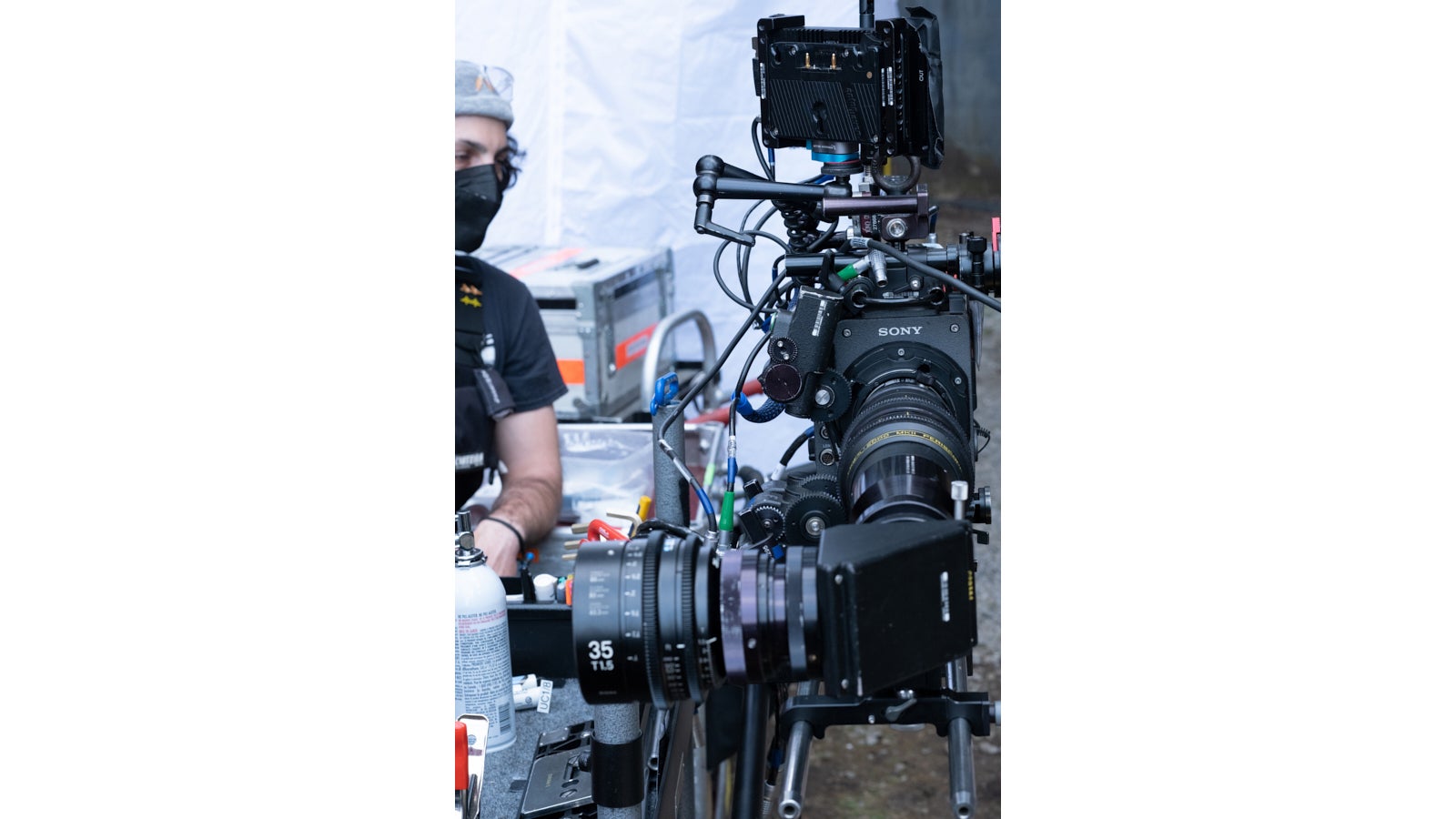
For Grillo, the versatility of the Sony VENICE “is what really captured my attention. For example, the fact that you have a whole set of internal NDs in one stop increments, allows you to precisely calibrate the camera as it gets darker, which is great. I used them all the time.”
With the way shows are scheduled today, noted Grillo, “you have to be creatively on your toes to keep up. Sometimes you are forced to use only practicals, or available light. In many situations, I didn’t have enough exposure on the camera, but with the Sony VENICE, there is a bit of a safety net. Obviously, digital gives you so much more information, sometimes more than you need, so you end up taking away light, rather than adding it.”
“American Rust” is currently airing on Showtime.




